When a system is taken from state I to state f along path iaf in fig - 21.23 Q = 100 cal and W = 40 cal Along path ibf Q = 72 cal . (a) what is W along path ibf ?
To solve the problem, we will use the First Law of Thermodynamics, which states:
ΔQ=ΔU+W
where:
- ΔQ is the heat added to the system,
- ΔU is the change in internal energy, and
- W is the work done by the system.
1. Identify Given Values for Path IAF:
- Heat added, ΔQIAF=100cal
- Work done, WIAF=40cal
2. Calculate Change in Internal Energy for Path IAF:
Using the First Law of Thermodynamics:
ΔUIAF=ΔQIAF−WIAF
Substituting the known values:
ΔUIAF=100cal−40cal=60cal
3. Identify Given Values for Path IBF:
- Heat added, ΔQIBF=72cal
4. Use the Change in Internal Energy for Path IBF:
Since the change in internal energy is a state function, it remains the same regardless of the path taken. Therefore:
ΔUIBF=ΔUIAF=60cal
5. Calculate Work Done for Path IBF:
Again, using the First Law of Thermodynamics:
ΔQIBF=ΔUIBF+WIBF
Rearranging to find WIBF:
WIBF=ΔQIBF−ΔUIBF
Substituting the known values:
WIBF=72cal−60cal=12cal
Final Answer:
The work done along the path IBF is WIBF=12cal.
---
- ΔQ is the heat added to the system,
- ΔU is the change in internal energy, and
- W is the work done by the system.
- Heat added, ΔQIAF=100cal
- Work done, WIAF=40cal
Using the First Law of Thermodynamics:
ΔUIAF=ΔQIAF−WIAF
Substituting the known values:
ΔUIAF=100cal−40cal=60cal
- Heat added, ΔQIBF=72cal
Since the change in internal energy is a state function, it remains the same regardless of the path taken. Therefore:
ΔUIBF=ΔUIAF=60cal
Again, using the First Law of Thermodynamics:
ΔQIBF=ΔUIBF+WIBF
Rearranging to find WIBF:
WIBF=ΔQIBF−ΔUIBF
Substituting the known values:
WIBF=72cal−60cal=12cal
The work done along the path IBF is WIBF=12cal.
Topper's Solved these Questions
- THE FIRST LAW OF THERMODYNAMICSBOOK - RESNICK AND HALLIDAYCHAPTER - THE FIRST LAW OF THERMODYNAMICSEXERCISE - PRACTICE QUESTIONS ( SINGLE CORRECT CHOICE TYPE )
48 Videos
- THE FIRST LAW OF THERMODYNAMICSBOOK - RESNICK AND HALLIDAYCHAPTER - THE FIRST LAW OF THERMODYNAMICSEXERCISE - PRACTICE QUESTIONS ( MORE THAN ONE CORRECT CHOICE TYPE )
9 Videos
- THE FIRST LAW OF THERMODYNAMICSBOOK - RESNICK AND HALLIDAYCHAPTER - THE FIRST LAW OF THERMODYNAMICSEXERCISE - CHECK POINT
8 Videos
- TEMPERATURE, ZEROTH LAW OF THERMODYNAMICS AND THERMAL EXPANSION BOOK - RESNICK AND HALLIDAYCHAPTER - TEMPERATURE, ZEROTH LAW OF THERMODYNAMICS AND THERMAL EXPANSION EXERCISE - PRACTICE QUETIONS (Integer Type)
4 Videos
- THE KINETIC THEORY OF GASESBOOK - RESNICK AND HALLIDAYCHAPTER - THE KINETIC THEORY OF GASESEXERCISE - PRACTICE QUESTIONS
72 Videos
Similar Questions
When a system is taken from state i to state f alone the path iaf, it is found that Q=50 cal and W=20 cal. Along the path ibf, Q=36 cal (figure) (a) What is W along the path ibf ? (b) If W=−13 cal for the curved return path fi, what is Q for this path ? (c) Take Ui=10 cal. What is Uf? (d) If Ub=22 cal, what is Q for the process in and for the process bf ?

View Solution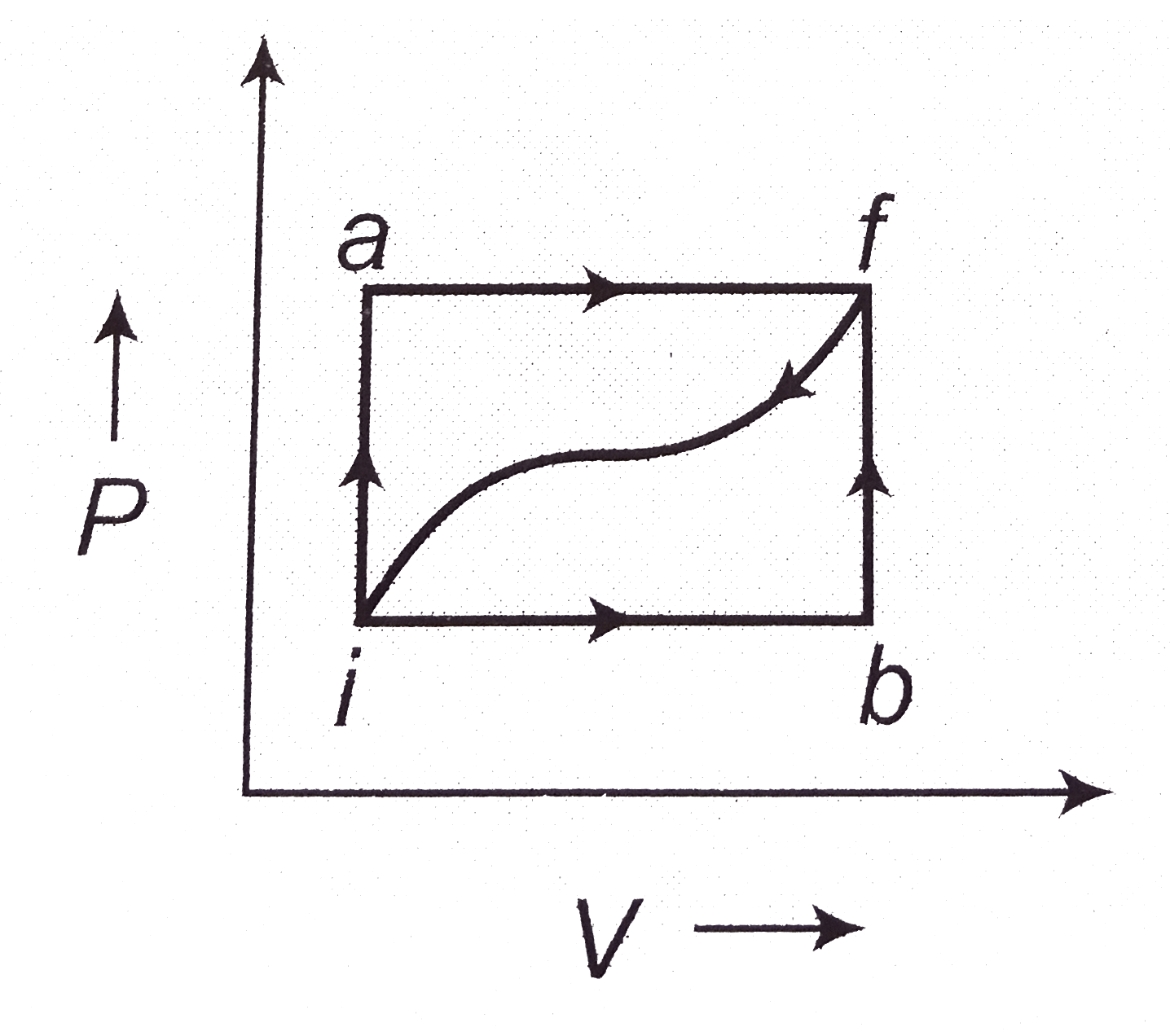
When a system is taken from a state i to a state f in Figure, along the path iaf, we find ΔQ=50cal and ΔW=20cal while during the path ibf, ΔQ=36cal. If Ui=10cal.
(a) What is U?
What is W along the path ibf?
(c ) If W=−13cal, along the curved path fi, what is ΔQ for this path?
(d) If Ub=22cal, what is ΔQ for the process ib? for bf?
View Solution
Knowledge Check
When a system is taken from state I to state f along the path iaf, it is found that Q = 50 cal and W = 20 cal. Along the path ibf, Q = 36 cal. W along the path ibf is
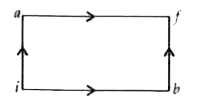 A14 calB6 calC16 calD66 cal
A14 calB6 calC16 calD66 calWhen a system is taken from state i to state f along the path iaf, it is found that Q=50calandW=20cal. Along the path ibf Q=36cal. W along the path ibf is
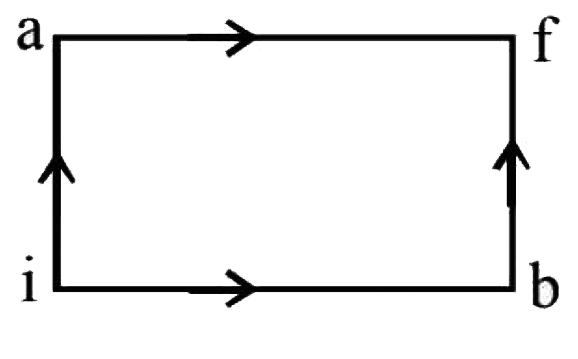 A14calB6calC16calD66cal
A14calB6calC16calD66calWhen a system is taken from state 1→2 along the path 1a2 it absorbs 50cal of heat and work done is 20cal. Along the path 1b2. Q=36cal. What is the work done along 1b2?
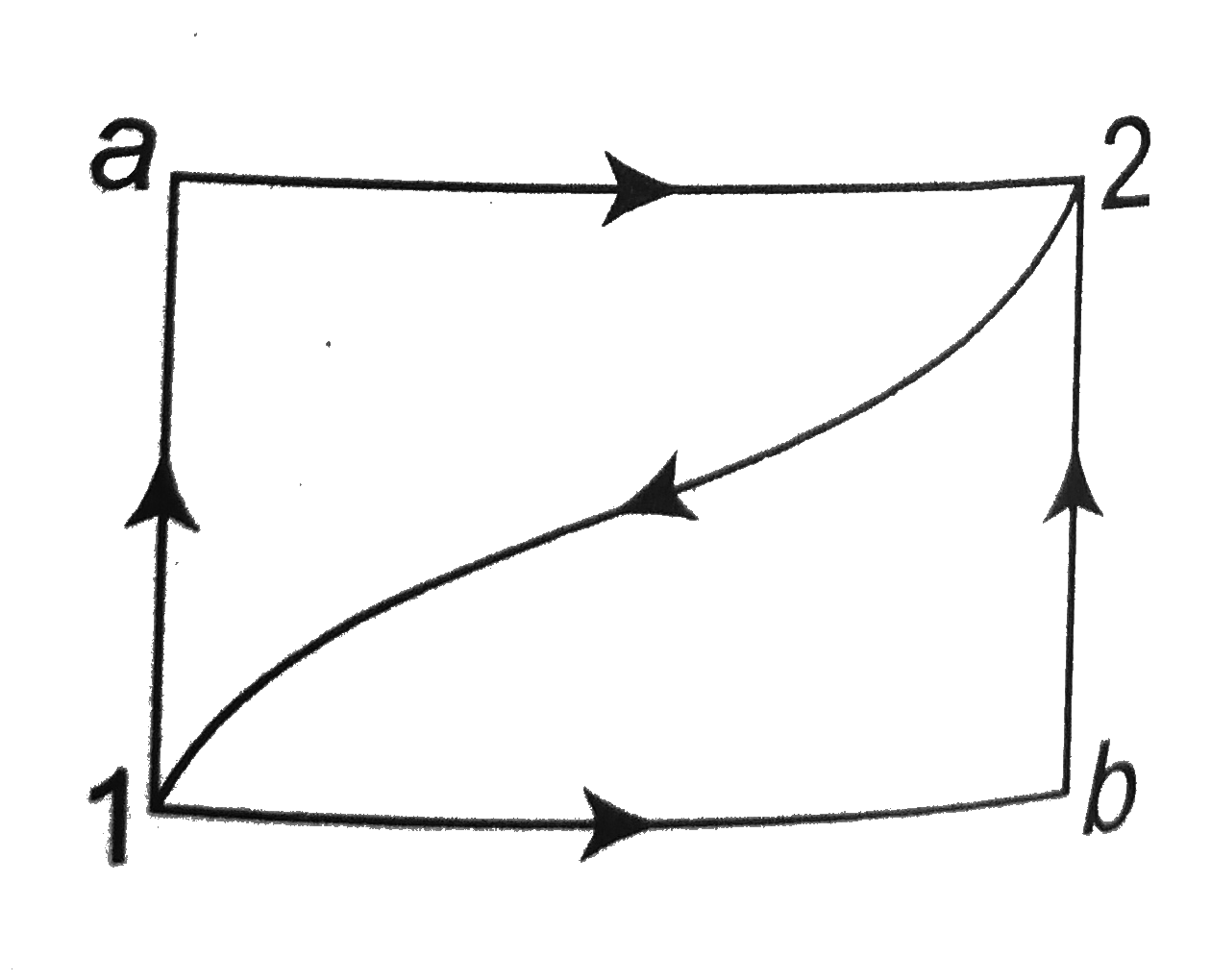 A56calB66calC16calD6cal
A56calB66calC16calD6cal
When a system is taken from state A to state B along the path ACB, 80 k cal of heat flows into the system and 30 k cal of work is done.
How much heat flows into the system along path ADB if the work done is 10 k cal ?
View SolutionWhen a system is taken from state A to state B along the path ACB, 80 k cal of heat flows into the system and 30 k cal of work is done.
How much heat flows into the system along path ADB if the work done is 10 k cal ?
When the system is returned from B to A along the curved path the work done is 20 k cal. Does the system absorb or liberate heat.
View SolutionWhen a system is taken from state f along path iaf,Q=50J and W=20J. Along path ibf,Q=35J. If W=−13J for the curved return path fI,Q for this path is
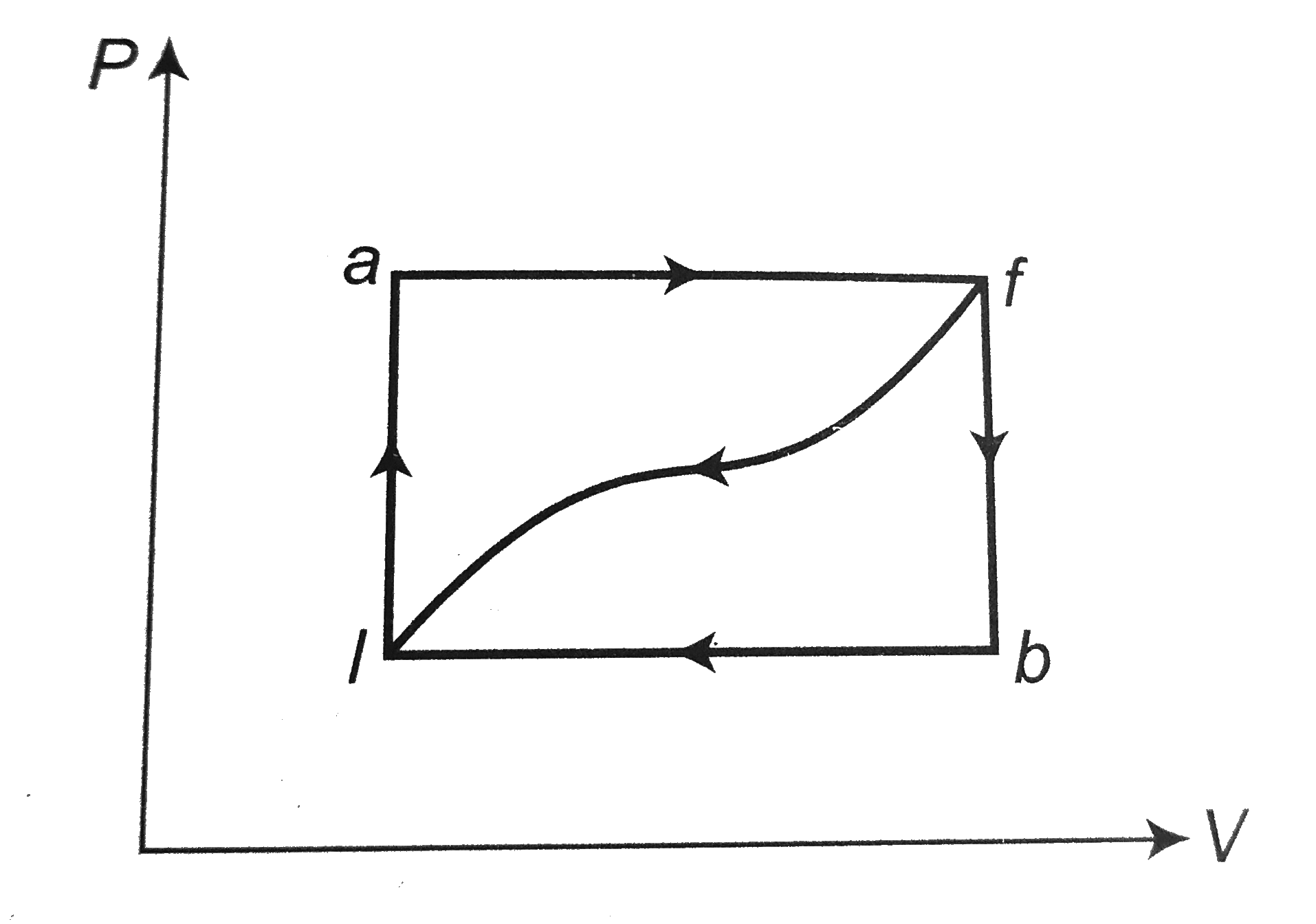
View SolutionWhen a system is taken from state 'a' to state 'b' along the path 'acb', it is found that a quantity of heat Q = 200 J is absorbed by the system and a work W = 80 J is done by it. Along the path 'adb', Q = 144 J
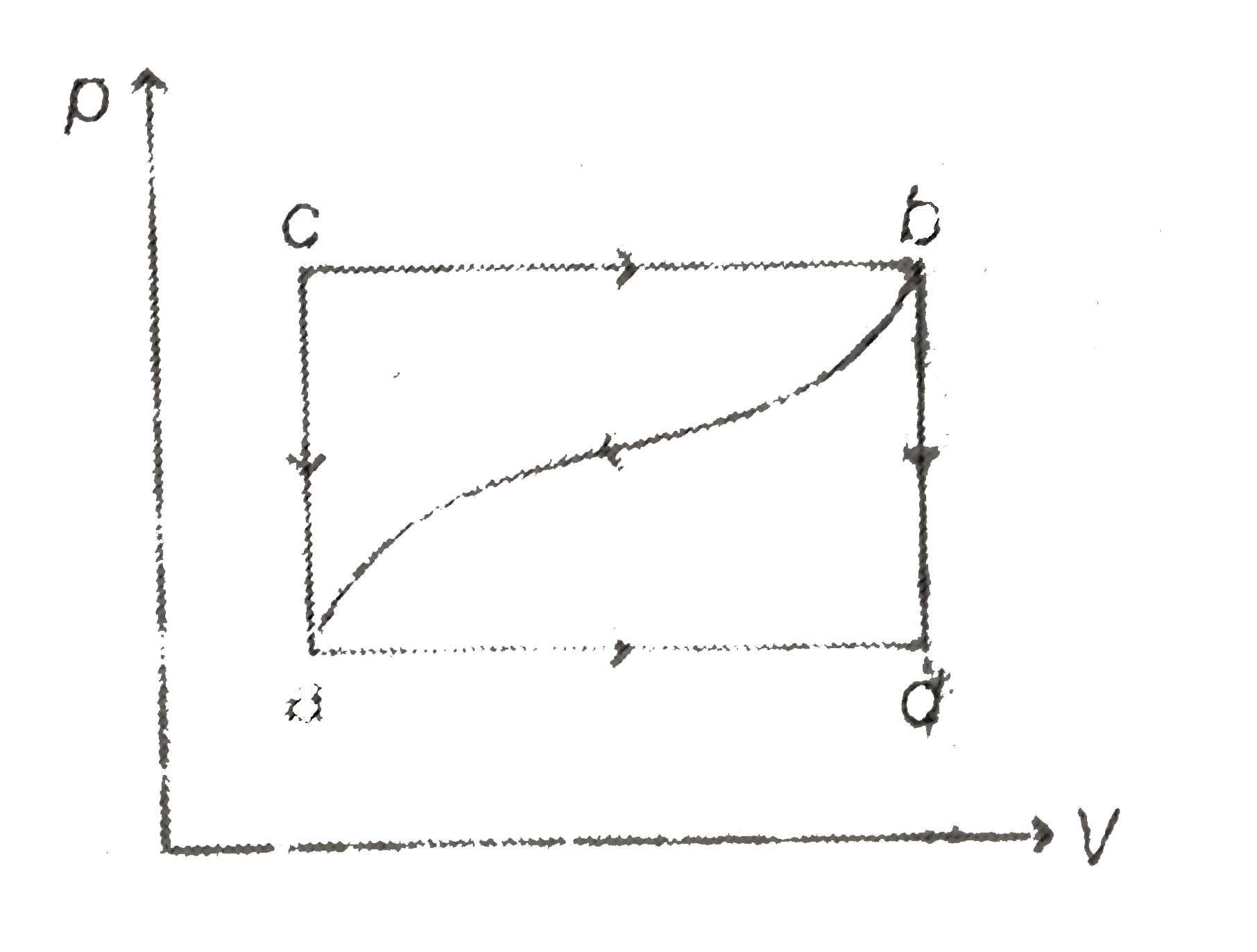
In the above question, if Ud=88J, heat absorbed for the path 'db' is
View SolutionWhen a system is taken from state 'a' to state 'b' along the path 'acb', it is found that a quantity of heat Q = 200 J is absorbed by the system and a work W = 80 J is done by it. Along the path 'adb', Q = 144 J
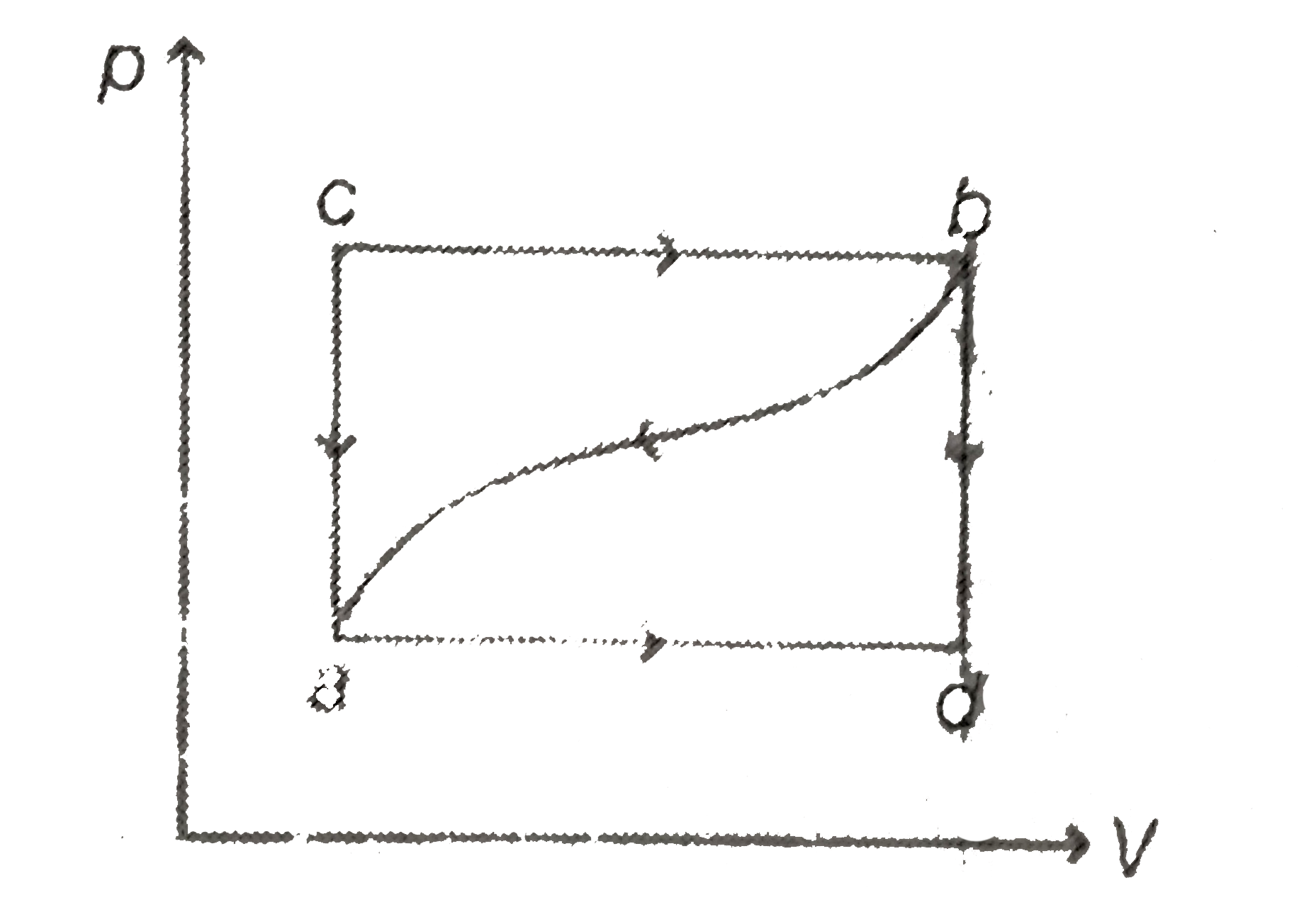
In above question, if Ua=40J, value of Ub will be
View Solution
